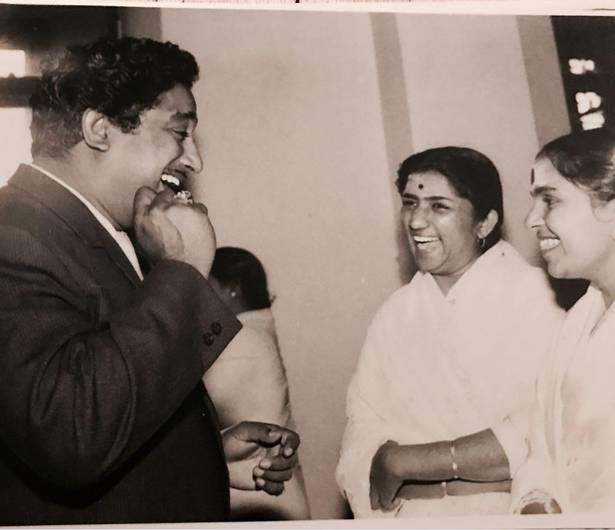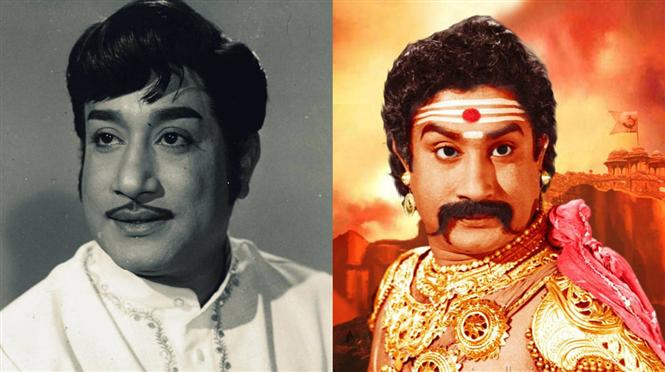

He was also aware that the number of lyricists addicted to liquor destroyed their lives prematurely. MGR had seen around him, how alcohol destroyed the lives and performances of his talented mentors and peers – especially those of comedians N.S. My conjecture, based on MGR’s strict adherence of non-alcohol use policy, is as follows.
Sivaji ganesan 1950s movie#
In hindsight, one can admire the efforts of MGR in demanding the best from his lyricists, music directors and singers, to elevate the Tamil movie songs to the caliber of freshly minted Tamil literature of the 20 th century. If the songs of MGR’s movies still retains the shine and literary glamor for those who listens to them after the passing of half a century, the labors of lyricists, music directors, singers and actors who cooperated with MGR deserve recognition. Here lies the secret of MGR’s attention to achieve perfection. Occasionally, even after the scenes had been shot and completed, he would dispose these, and demand recording another another song. The already recorded songs, he would listen repeatedly, and ask for alternate tunes and lyrics, and demand re-recording. Repeatedly he would check again and again. He wouldn’t be satisfied with the already finished shots.

Scriptwriter Arur Doss had written “Not only with the movies produced and directed by others, even for his own productions, MGR was like that. MGR wouldn’t easily compromise, when it comes to shooting scenes and recording songs for his movies. Srinivas (four songs in Mannathi Mannan 1960, Thirudathe 1961, Paasam 1962) and S.C. Occasionally, either for the character role in a movie or as a personal favor, MGR also had used the voices of P.B. Towards the late years of his career in 1970s, MGR phased out Soundararajan by incorporating two new singers, S.P. Soundararajan became the ‘sole voice’ for MGR. Rajah, in place of Tiruchi Loganathan.įor most of 1960s, in rivalry with Sivaji Ganesan, T.M. Now, I had revised this table, to include A.M. Also, Loganathan (born in 1924, and not in 1914 as indicated in the 2013 Table) was a junior by birth to Chidambaram Jayaraman and Soundararajan. Though Loganathan had been involved in few of MGR’s movies (notably Manthiri Kumari and Gul E Bagavali), for some unknown reason, his voice had not been used for MGR. Mariappa, who became the first playback singer to MGR. It was not Loganathan, but his maternal uncle M.M. Subsequently, I found inadvertent errors in it, related to the details presented on singer Tiruchi Loganathan. Soundararajan and posted in this website ( ). Material in Table 1, was originally compiled in June 2013 to celebrate the life of T.M. ( Table 1 – MGR’s Main Playback Singers in 1950s-1960s). Soundarrajan and Sirkazhi Govindarajan – to represent his voice in 1950s. Subsequently, after gaining confidence and a degree of control in his career from 1954, MGR preferred four singers mainly – Chidambaram S. Mahadevan had given voice to MGR in a movie Panakkari (The Rich Woman, 1953 an adaptation of Tolstoy’s novel ‘Anna Karenina’). Mariappa’s voice was heard in the first two MGR’s hero role movies, Rajakumari (1947) and Maruthanaatu Ilavarasi (1950).

He was a maternal uncle of reknowned playback singer Tiruchi Loganathan (1924-1989) of the first generation. The first playback singer who ‘gave’ voice to MGR the hero, was a native of Tiruchi, M.M. This paradigm-shifting decision may be included as a ‘minor’ revolution MGR introduced in the movie production business, which lead to the incorporation a new category of singers (called as playback singers) in the composition and presentation of film music.įrom Lt-Rt – MGR, Subbiah Naidu, Sivaji Ganesan and Kannadasan Chinnappa, a leading star of that era), MGR felt intuitively that his voice was sub par to those of ranking singer-actors of 1940s (such as K.R.
Though competent enough to sing (and urged to do so by P.U. But, situation changed when MGR came to play the hero role in 1947. Almost all the first generation lead actors (men and women) including comedians in Tamil movies were able singers and sang their own songs. Since talkies came into existence, it had been the cultural tradition in Indian movies that songs and singing became an essential component for education and entertainment. Meaningful Songs as a Teaching Instrument MGR Remembered – Part 50 Teaching with Songs


 0 kommentar(er)
0 kommentar(er)
